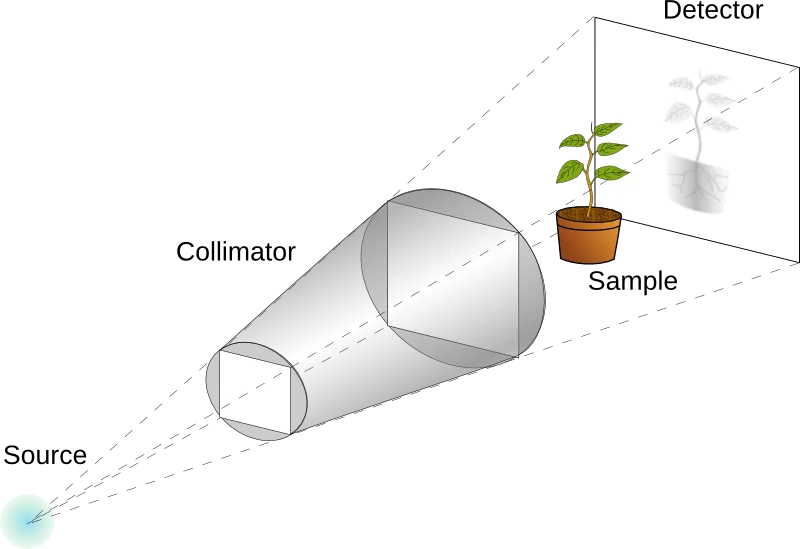The neutron generating source can be a reactor (like FRM-2 in Garching near Munich), the target of an accelerator (like the spallation source SINQ) or a neutron emitting isotope. The collimator is a beam forming assembly which determines the geometric properties of the beam and may also contain filters to modify the energy spectrum of the beam or to reduce the content in gamma rays of the beam. The image resolution achievable with the beam depends much on the collimator geometry and is expressed by the L/D ratio, where L is the collimator length and D is the diameter of the inlet aperture of the collimator on the side facing the source. The beam is transmitted through the object and recorded by a plane position sensitive detector, i.e. the detector records a two dimensional image that is a projection of the object on the detector plane.
By combining images from measurements at different angles tomographic reconstruction may be carried out. Dynamic processes can be studied by detector systems with fast imaging capacity. This is the field of neutron real-time imaging. Various detector systems are employed in NR : combinations of film and a neutron-sensitive converter foil, combinations of a light-emitting scintillator screen with a CCD camera , neutron sensitive imaging plates, track etch foils or recently amorphous silicon flat panel arrays.


